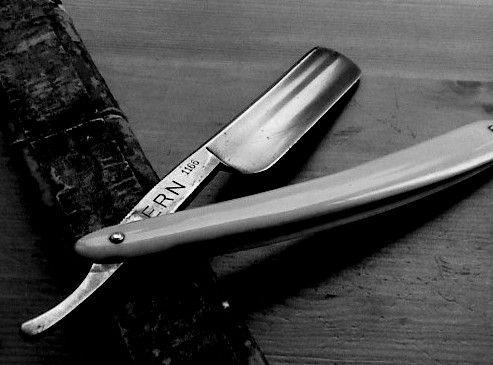On 28th April 1882 George Henry Lamson met his maker at the end of William Marwood's rope at Wandsworth Prison for the murder of his disabled brother-in-law Percy Malcolm John.
George Lamson was born in New York city in the United States of America to William C Lamson, a clergyman and his wife Julia. At some point before the 1870's George travelled with his parents and siblings to England. He can be found aged 18 living with his family at Sydney Lodge on the 1871 Census, his occupations is described as a medical student. After George graduated from medical school he volunteered as a surgeon in Eastern Europe before returning to England.
In 1878 Dr Lamson married Kate George John in the Isle of Wight. On the 1881 Census Dr Lamson can be found listed as Henry G, physician surgeon, living in Cambridge Road in Christchurch, Bournemouth. Kate is visiting her sister Margaret and brother-in-law William Greenhill Chapman, along with her baby daughter Agnes in 1881.
Percy John, who had a deformity of the spine which resulted in partial paralyse, was boarding at Blenheim House School, Wimbledon in 1881.
On his return to England Dr Lamson had become addicted to morphine, his addiction had eaten away at his assets. Deep in debt Dr Lamson could see no way out other than murder. Desperate to bring the finances of his wife's family under his control, George decided to murder his 18 year old brother-in-law Percy John. On 3rd December 1881 Dr Lamson visited Percy at his school lodgings where together they had tea and Dundee cake. Dr Lamson was then able to convince Percy to take some pills laced with aconite, a poison derived from the plant Monkshood. That night Percy suffered serious stomach cramps and died shortly after. Suspicion soon fell on Dr Lamson, who had suddenly departed to Paris. Soon the newspapers had picked up on the story of poor Percy's death, which prompted Dr Lamson to return to England to protest his innocence. Dr Lamson had been taught during his medical student days that aconite was undetectable, however forensic science had progressed since then.
An examination was made of Percy's vomit, stomach fluids and urine. All were found to contain aconite, as were the pills Dr Lamson had given Percy, which were found in Percy's room after his death. Dr Lamson was brought before magistrates at The Old Bailey in the February 1882. It took the jury only 25 minutes to convict him of the wilful murder of Percy John, a sentence of death was passed. When asked if he had anything to say, Dr Lamson simply stated, "merely to protest my innocence before God."
Dr Lamson's execution date was set for the 4th April 1882, but this was delayed due to the intervention of the US president and Dr Lamson's family and Friends in New York, who wished to provide evidence of insanity in Dr Lamson's family. The New York Times reported -
"Dr Lamson's American Friends.
Efforts To Obtain A Reprieve On The Ground Of Hereditary Insanity.
The case of Dr, George Henry Lamson, who was convicted in London, England, on the 13th Inst (February 13th 1882), on the charge of causing the death of his brother-in-law, Percy Malcolm John, by giving him poison, has aroused a deep feeling of sympathy among Americans, not only in this city, but else-where.
Young Dr. Lamson was arrested in December last, on the specific charge of having wilfully poisoned his wife's brother by giving him aconitine pills at Blenheim House School, Wimbledon. Percy John was only 19 years of age and suffered from a serious affection of the spine. The friends of Dr. Lamson have been more or less-firm in the conviction that the prisoner is insane, and since the close of the trial evidence is accumulating rapidly to show that insanity hereditary in Lamson's family.
An investigation of the records of the Bloomingdale Asylum for the Insane, was made and it was found that the Rev. William Lamson's mother, maternal uncle and sister died in that institution."
The evidence of the supposed hereditary insanity was considered not to be strong enough to change the sentence passed and Dr Lamson was hung for his crime.
George Lamson's father William was to later write to the London newspapers stating that all of George's debts could have been cleared and medical attention given for his addictions, possibly preventing the murder of Percy, if George had only said the word. I am sure that came as little comfort to Percy's family.







